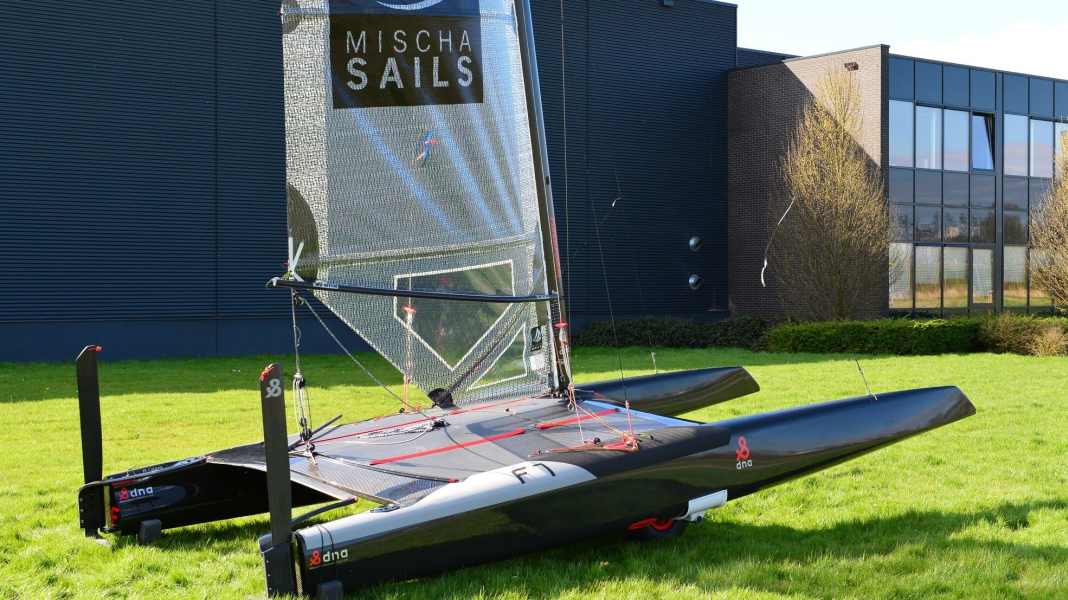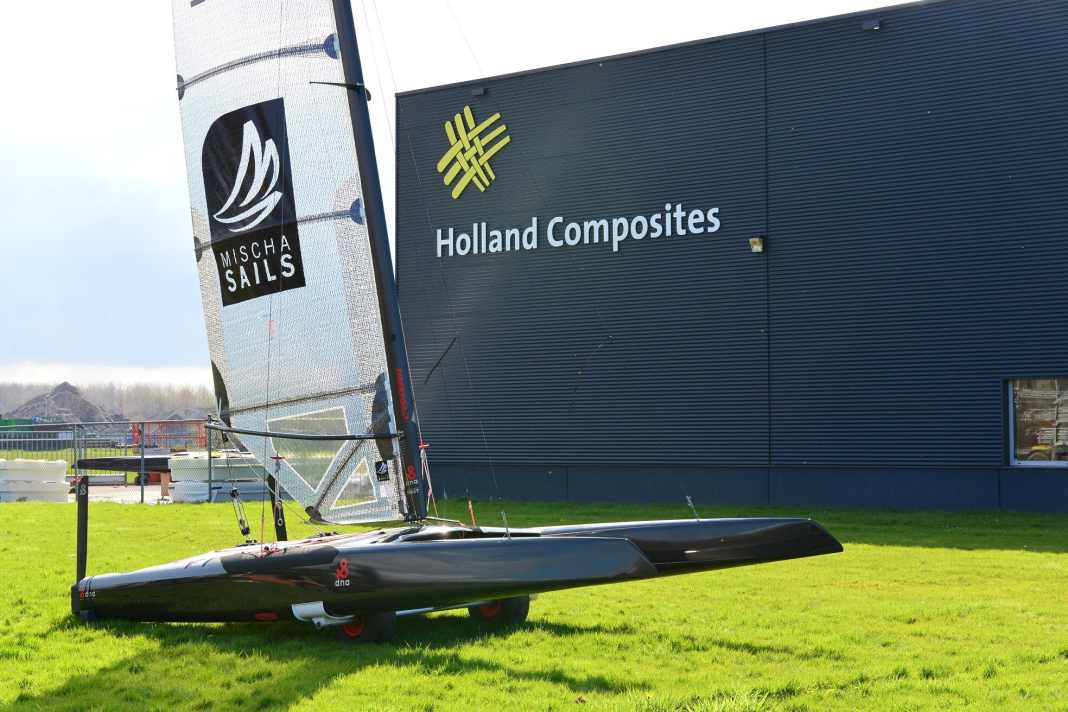
In purely visual terms, the new A-Cat from Holland Composites is a rocket. As if from a single mould, completely in visible carbon, sleek, elegant, noble, aggressive - adjectives can be derived in abundance from the pictures and the first published video.






The carbon fibre forge, which designed the first foiling cruising catamaran Gunboat G4 among other things, has been in the A-Cat business for 25 years. The DNA 2016 F1 is a further development of the four-time and last year's world champion DNA A-Cat and yet a completely new design that is likely to delight high-tech and speed enthusiasts, but will also meet with scepticism from the A-Cat sailor base.
With the new Cat, a lot of emphasis was placed on low drag, a trend that can also currently be seen in the America's Cup. The Dutch provide an example of this: even at 13 knots upwind in a 17 knot breeze, the apparent wind adds up to 30 knots. Anyone who has ever tried to reach 55 kilometres per hour on a bicycle can imagine how important this aspect is.
Test drives with the prototype of the A-Cat DNA F1
The beams are therefore integrated into the hulls in a streamlined manner and there is no longer a classic trampoline, but a homogeneous surface made of Mylar film. The traveller has also been recessed.
The rig follows the trend set last year by cat specialist Glenn Ashby. A relatively narrow mainsail cut in the top area reduces the pressure when dropping at the windward mark, which favours capsizing over the nose in stronger winds. The fabric gained was added to the foot of the sail, which is thus flush with the trampoline and generates fewer induced vortices.
As a conventional main boom is not possible, a boom is used as in windsurfing. To ensure that the traveller is not pulled to windward at the same time as the sheet is being pulled tight aft, the sheet is deflected forwards and operated from the front, which also ensures greater stability in the harness.
The DNA F1 is designed to sail continuously on foils from the start. However, as the class rules have not been changed, i.e. the centreboards must be able to be inserted into the centreboard box from above, Holland Composites has opted for very stretched L centreboards and a combination with right-angled L rudders. In contrast to the America's Cup, where J centreboards are possible, both centreboards must be in the water to ensure stable foiling.
In the published video, the Cat foils very stably; the helmsman is obviously endeavouring to keep both daggerboards in the water in a very upright position without heeling. However, the test runs also took place in very smooth water.
The DNA F1 is obviously a very hot sailing device on the market. However, it has not yet been met with undivided enthusiasm. "The current foiling A-Cats can only be mastered by a handful of sailors, like an Ashby," says Ingmar Warnicke, second chairman of the German A-Cat Class Association. As long as foiling is not possible for amateur sailors in a reasonable amount of time, such boats would be counterproductive. "Those that have similar predecessors are slower than normal A-Cats for the most part, because they have more resistance when they are not foiling." The hovering condition on rougher areas such as the Baltic Sea is also almost impossible to master, which further restricts the choice of area in a class that is not very strong in terms of members anyway.
In addition, the older boats may now lose their chances and value even faster. "There are already plans to introduce two classifications for foiling and non-foiling A-Cats," says Warnicke. "But what good would that do for a class that has just ten boats in the rankings in the north?"
